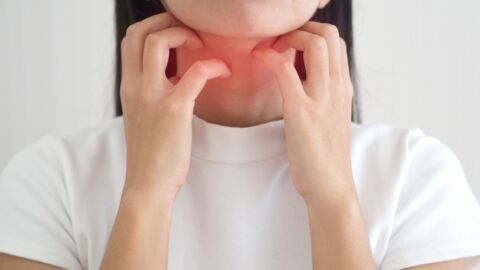One of the first psychiatrists to publish findings about the connection between Candida and depression is Dr. Orian Truss. His compelling work has been cited in numerous books and helped countless patients to date. Interestingly, his discovery in 1981 did not generate much interest from the psychiatric community who had just begun to see the effects of MAO inhibitors. While these and other modern antidepressants remain an important tool for treating psychiatric patients, studies have demonstrated that their efficacy rate is only about 20-30 percent (Kroenke, Hansen). Clearly, we do not have sufficient understanding of the complex spectrum of mental disorders that plague millions of individuals. To this end, we should leave no stone unturned. Especially if that stone has already shown to provide helpful information.
Dr. Truss hypothesized that where Candida is merely a nuisance for some, it causes chronic illness (including mental illness) in others. People with weakened immune systems are particularly at risk however they need not have HIV or leukemia to suffer. At the Huxley symposium (1981), he presented 6 case studies he believed to encompass the so-called Candida syndrome that he discovered. All individuals had been exposed to multiple rounds of antibiotics or other immune lowering agents. These individuals were often female. Depression was almost always one of many vague symptoms. Loss of memory, difficulty concentrating, sensitivity to chemicals and other symptoms were also noted. Dr. Truss began to incorporate treatment with antifungal therapy for patients with chronic mental illness. Interestingly, all of the individuals responded to the treatment and their symptoms of depression lifted.
More recently, a double blind placebo controlled study in 2001, under the direction of Heiko Santelmann found the antifungal drug nystatin to be significantly more effective at reducing symptoms of depression in polysymptomatic patients. In fact, the authors of the study noted that some of the most dramatic improvements reported were from individuals who had mental complaints. While nystatin is not specific to Candida, it is a compelling study that demonstrates yeast can affect mental health.
Dr. Truss noted the difficultly of testing for Candida since nearly everyone has had exposure to the organism. Determining the degree to which each individual suffers is based on a set of vague symptoms that often ends with the patient being labeled as psychosomatic or psychiatric. Fortunately, today we have more robust methods of detecting Candida and a better understanding of the mechanism which may be causing symptoms.
Genetic coding has helped determine the mechanisms that pathogens employ to help increase virulence. In the case of Candida albicans, a specific gene that codes for Immunogenic Alcohol Dehydrogenase was detailed in 1994 (Bertryam). This enzyme produces acetylaldehyde from glucose or ethanol (Gainza-Cirauqui). This acetylaldehyde creates an environment that is not conducive to most microbes which effectively decreases the competition. In humans, acetylaldehyde is a carcinogenic compound that easily passes the blood brain barrier where it interferes with neurotransmission (Correa). Depression and acetylaldehyde both cause a reduction in natural killer cell cytotoxicity (Irwin). Since nearly everyone has Candida in the body, it is plausible that a brief episode of depression may increase the possibility of developing a chronic condition.
For years, a yeast culture with sensitivity has been the mainstay of Candida testing. The benefit to this test is that it can determine the exact species of yeast so that appropriate treatment can be instituted. The problem with this method is that it is notorious for producing false negatives (Maaroufi). Metabolites of yeast detected in The Great Plains Laboratory Organic Acids Test are a very reliable method of detecting Candida overgrowth (Shaw). While this test cannot determine the exact organism, this is less important. Most prescriptive antifungal agents are effective at killing Candida albicans, which is the most common yeast species (Shaw).
Armed with correct information, the latest in diagnostic testing, and viable treatment options, psychiatric and primary care physicians can exercise multiple options for patients with symptoms of depression and other mental health disorders. As more and more physicians are looking outside the box to find solutions to psychiatric diseases as complex as the patients themselves, many are turning to comprehensive testing for yeast (and other pathogens) for answers. If a patient presents with a recent onset of chronic depression in the absence of major trauma, it makes sense to ask the question: Could this be related to Candida or another pathogen? Doing so may save your patient’s life, or at least the life they once knew!
CLINICAL REFERENCES
- Hansen, R. et al. (2005). Efficacy and Safety of Second-Generation Antidepressants in the Treatment of Major Depressive Disorder. Annals of Internal Medicine, 143(6); 415-426.
- Kroenke, K., et al. (2001). Similar Effectiveness of Paroxetine, Fluoetine, and Sertaline in Primary Care. JAMA, 286(23); 2947-2955
- Truss, O. (1981). The Role of Candida in Human Illness. Presented that the Huxley symposium, September, Birmingham, AL.
- Bertryam, G., et al. (1995). Structure and Regulation of the Candida albicans ADH1 Gene Encoding an Immunogenic Alcohol Dehydrogenase. Yeast, 12:115-127.
- Santelmann, H et al. (2001). Effectiveness of nystatin in polysymptomatic patients. A randomized, double-blind trial with nystatin versus placebo in general practice. Family Practice, 18; 258-265.
- Gainza-Cirauqui, ML., et al. (2013). Production of carcinogenic acetaldehyde by Candida albicans from patients with potentially malignant oral mucosal disorders. Journal of Oral Pathology and Medicine, 42(3); 243-9.
- Correa, M., et al. (2011). Piecing together the puzzle of acetaldehyde as a neuroactive agent. Neuroscience and Biobehavioral Reviews, 36; 404-430.
- Irwin, M., et al. (1990). Major Depressive Disorder, Alcoholism, and Reduced Natural Killer Cell Cytotoxicity: Role of Severity of Depressive Symptoms and Alcohol Consumption. JAMA Psychiatry, 47(8); 713-719.
- Maaroufi, Y., Heymans, C., De Rune, J., Duchateau, H. (2003). Rapid Detection of Candida albicans in Clinical Blood Samples by Using a TaqMan-Based PCR Assay. Journal of Clinical Microbiology, 41; 3293-3298.
- Shaw ,W., (2008) Biological Treatments for Autism and PDD. Publisher: Author.




